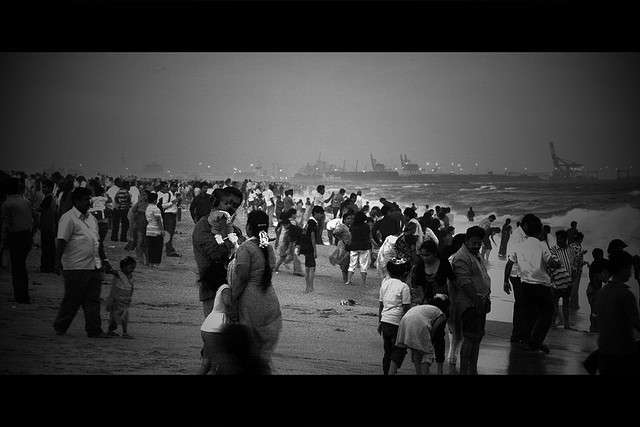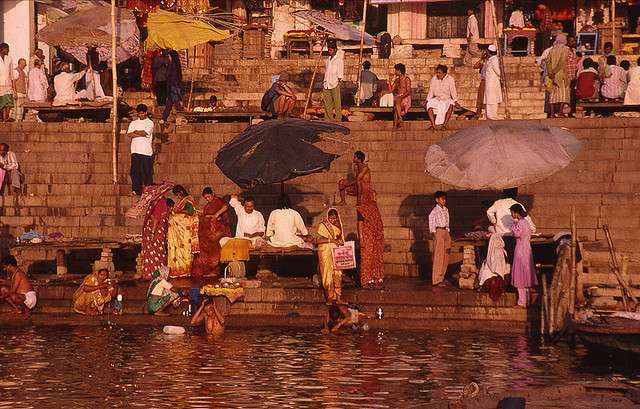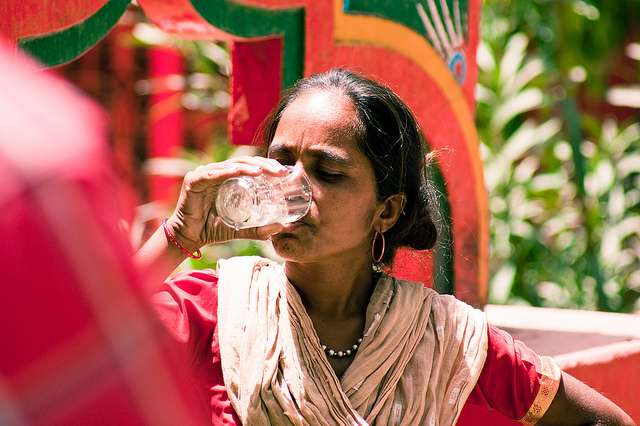A slow burning natural disaster

Sometime in the next several days, monsoon rains will begin to sweep across India and gradually move northward, offering drenching relief to thousands caught in this year's relentless heat wave. Andhra Pradesh, one of the hardest hit states, has reported over 1600 deaths in the past week alone. As of Tuesday morning, more than 2300 people had died nationwide as a direct result of the extreme heat.
Recent reports describe modest efforts to mitigate this disastrous outcome. The government has encouraged people to stay home and keep hydrated, and established a distribution network for drinking water and buttermilk. Yet many news stories speculate that relief can come only in the form of the coming rains, and imply that other efforts to curb the death toll may be futile.
"These deaths are easily avoidable. All they need to do is follow basic precautions like avoiding working in the sun. Not many listen. What can we do? It's a problem of poverty," M. Sudhir Kumar, a civil assistant surgeon at Dakkili Primary Healthcare Centre, told the Times of India.
But local leaders and academics alike need to come up with better ways to reduce the damage rather than throw up their hands.
The heat wave is a slow-burn natural disaster representing the sort of environmental emergency we should expect more frequently in coming years. The UN's Intergovernmental Panel on Climate Change reports that extreme weather events will likely become more common, and that "it is very likely that heat waves will occur more often and last longer, and that extreme precipitation events will become more intense and frequent in many regions."
Many of these events will disproportionally affect populations with fewer resources to protect themselves, more to lose when extreme events happen, and longer recovery times.

Here's where the global health community, NGOs, and community organizations come in. As we concentrate on the increasing prevalence of non communicable diseases—especially in rapidly developing nations like India—we need to include environmental emergencies and climate driven events in our planning.
Those of us devoted to wilderness and environmental medicine should pay special attention. This ongoing disaster represents an opportunity for the wilderness medicine community to influence public health in remote, austere locations like the ones most affected yearly by blistering heat.
The Wilderness Medical Society guidelines for the treatment of heat-related illness provide an outline for medical care required for different stages of heat illness. With that foundation, local knowledge should take over: what is the best way to alert communities when extreme heat is predicted? Where should towns and villages establish cooling stations? Can cool mist devices be improvised to serve large numbers of people?
Heat emergencies are predictable—and amenable to locally devised action plans, which should aim to reduce the morbidity due to heat illness on all levels: by distributing increasingly urgent warnings when high temperatures are predicted, encouraging individuals to change their behavior when temperatures rise (alteration of work hours, frequent breaks for laborers and checks on the elderly), implementing community relief measures like cooling centers and provision of adequate drinking water, and enacting standardized protocols for emergency personnel to treat heat stroke quickly both in the field and at health centers and hospitals.
The Gujarati city of Ahmedabad has had such a system for the past few years. A plan to mitigate heat deaths seems to have paid off—the protocol includes cooling stations, a public health awareness campaign, and social messaging apps to convey updated information. The Ahmedabad Heat Action Plan, an impressive document created by a variety of international organizations including the Natural Resources Defense Council, provides an elaborate blueprint outlining what constitutes a heat emergency and what stepwise responses should be taken. Hopefully the implementation of this plan has already led to measurable decreases in morbidity due to heat stress.
But it's difficult to tell if similar measures have been enacted in more remote areas, like Andhra Pradesh and neighboring Telangana, which remain perilously exposed. In these primarily rural districts, at-risk groups like laborers and older individuals have little access to cooling measures.

What will it take to implement a campaign like the Ahmedabad plan in the hardest hit regions? In these districts, populations are more spread out and less apt to be the beneficiaries of such a prestigious international academic collaboration.
An effective strategy seems to require few resources besides community engagement, the ability to deliver public health messages, and simple technology like electric fans and misted water. Yet despite the escalating—and oftentimes tragically avoidable—death rate, it remains difficult to convince people to comply with solutions offered by the government.
Frustrating, but not hopeless. Academics and local officials like those behind the Ahmedabad plan need to devise more persuasive ways to nudge the population to alter their behavior safely. Rewards for employers to change work requirements? Incentives to persuade people to hydrate appropriately or visit cooling centers? We can probably do better—if experts in public health and environmental medicine effectively join with community innovators with fresh ideas about changing behavior and providing accessible relief.
As the monsoon reaches the south of India in the coming weeks, we'll likely see a dramatic drop in heat related deaths as the rains provide some much needed cooling, and the specter of heat related deaths will fade from the headlines until next year.
And then the floods will come.

















